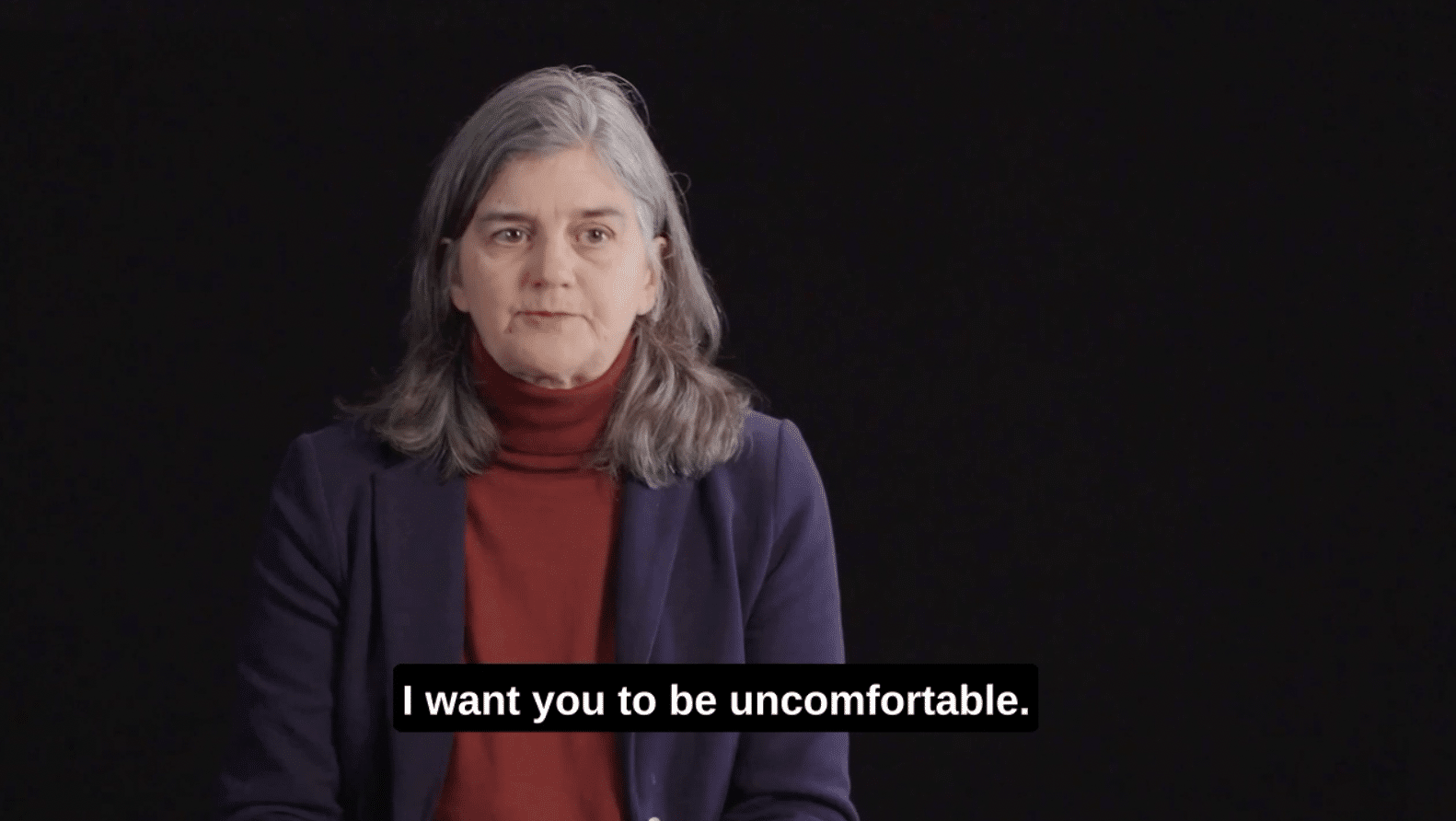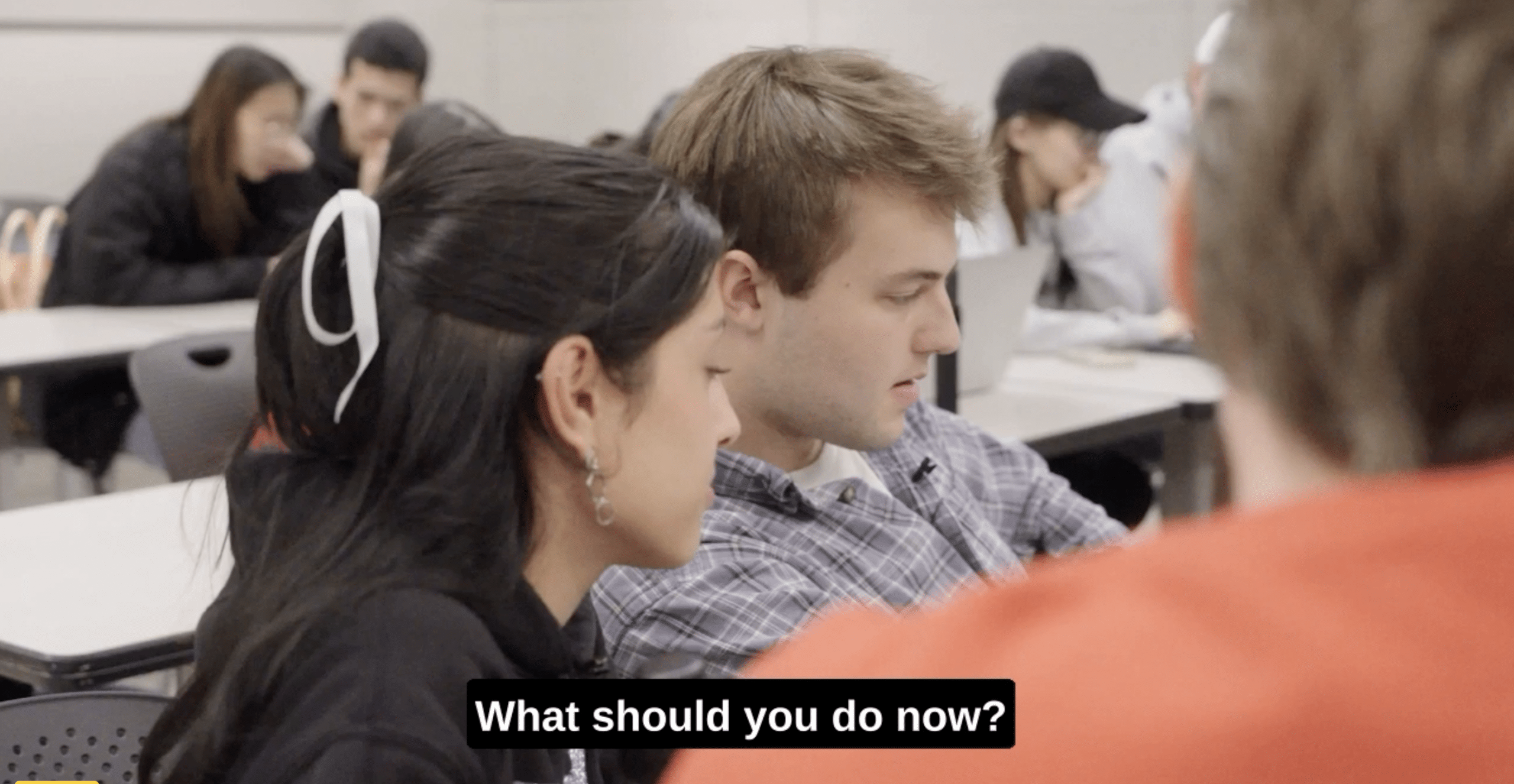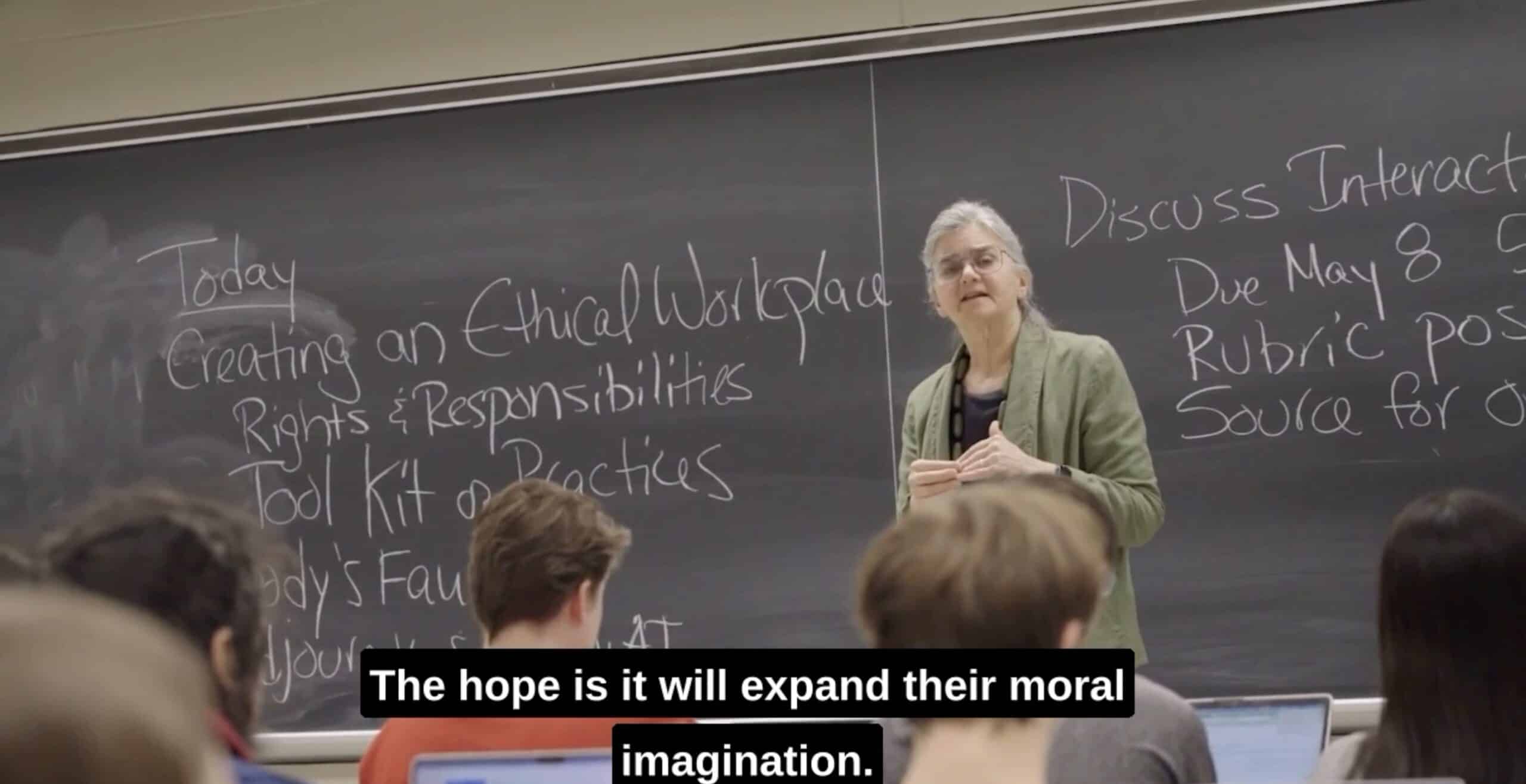by Brock Horning | May 2024
It’s the acronym on everyone’s lips. AI has well and truly arrived. Every sector is grappling with its own AI-related opportunities, challenges and questions – and none more so than education. With these powerful new technologies, capable of answering any essay question that tutors can concoct, how can they accurately assess each student’s knowledge and understanding of course topics?
Elizabeth Karns MPH JD of Cornell University shares her methods of using interactive video to both combat and embrace the impact of generative AI technologies.
All educators know the challenges of teaching around generative AI
“With generative AI, students can complete written assessments before I’ve finished setting them.”
It’s an issue that all educators are increasingly familiar with. New technologies now allow students to pass assessments without any actual understanding of the course topic. This makes accurately assessing student knowledge extremely challenging.
But, educators can’t ignore the presence of generative AI. As Elizabeth says: “An educator who ignores the presence of Gen AI is no longer current. The reality for our students and future workers is that this is a tool that will be used.”
So before you throw your hands in the air and resort to pen and paper exams, there is another way.

Elizabeth Karns talks about her methodology in her Ethics course. Find out more in Ethical Data Science
What’s the answer? Interactive video.
Interactive video presents the sweet spot. Students must engage head-on with the course topic but can still utilise some of generative AI’s advantages. By incorporating narrative techniques, interactive video can engage with the course topic, encouraging students to analyse different decisions and explore consequences or outcomes.
Elizabeth has already seen how effective this can be for information recall and concept understanding:
“Students start with a simple idea, like whether to use data without consent when pressured by their boss to do it. If asked to write on this topic, I will typically get a superficial answer such as ‘never use data without consent and privacy is important’. This suggests that they are not thinking about the issue deeply or with any of the tools we discuss in class.
On the other hand, as they build it out in Stornaway they see the more subtle aspects of the interaction. I meet with students frequently which allows me to see the progress on their project. They’ll come to me and say: ‘NOW, I understand why this is a problem.’ I’ll also hear students referring to the interactive experience for weeks after – that’s more than I get for any of the articles I assign. A well-crafted experience resonates for students and they can apply it in new contexts.”

Students at Cornell University on Elizabeth Karns’ Ethics course. Find out more in: Ethical Data Science
And the cherry on top? “Generative AI can’t watch an interactive video in the same way that a human does.”
So how do you implement interactive video into your course? Elizabeth suggests two ways:
Option 1: Create an interactive experience that sparks engagement and discussion
In the first instance, create interactive experiences exploring scenarios and challenges that students may encounter in their professional future. By requiring students to analyse scenarios and respond in the moment, they engage in the course topic and develop a deeper understanding of core decisions and corresponding consequences. If watched as a group activity in class, each decision point can be used to spark discussion and debate.
Case Study: Data Science - Nobody’s Fault
‘Nobody’s Fault’ is an interactive experience exploring ethical data science. Using narrative techniques, the aim is to get students engaging and empathising with a given ethical question or situation. To get students thinking about realistic scenarios and allowing them to make decisions and uncover consequences.
To see this in action, here’s the interactive film, Nobody’s Fault, below:
After playing through the interactive film, Elizabeth then sets essay questions and assessments that relate to the subject of the interactive film.
For example: “Create an allocation of responsibility between those you described in the conflict. Divide the responsibility between the people, the data and the tools…”
Option 2: Ask students to create interactive videos on a course topic
The other option is to ask students to create their own interactive videos that explore the course topic. Crafting an interactive video requires students to consider all angles and perspectives on a certain subject – encouraging them to truly engage in the challenge.
It’s here that generative AI can be used to create the video and image content required. AI can be a beneficial part of the assessment, teaching students how to use tools like this in the service of greater understanding.
This has proved to be a very popular, time-efficient option. Elizabeth does not actively teach Stornaway.io to students. It’s so easy to pick and play that no time is required to help students learn the software.
Why is this so effective?
“By creating interactive experiences, students really engage with the issues and challenges.”
Building an interactive experience around a course topic encourages students to really get to grips with the details of a scenario or concept. It’s only by looking at all angles and perspectives that you can present a full interactive narrative and demonstrate a fully rounded understanding of the situation.
Other benefits include the incorporation of generative AI. Students are not banned from all the tools at their disposal but instead learn how to use them to further their education and understanding. Secondly, at the end of the module, they have a tangible and unique piece of work that they can be proud of. In fact, many students have gone on to show their interactive experience to prospective employees.

Students at Cornell University on Elizabeth Karns’ Ethics course. Find out more in: Ethical Data Science
Other benefits of interactive video in education
Increased engagement in and out of class
Interactive video can be a versatile and adaptable medium to teach and share new concepts and scenarios. Inside the lecture hall, decision moments can inspire class discussion and debate that allows different perspectives to shine. It can also be completed outside the classroom with students responding to the material through written essay questions and other traditional assessment techniques.
Accepts AI yet retains human guidance
As we increasingly hand teaching responsibilities to AI and algorithms, interactive video maintains a way to personalise teaching without losing the human touch and guidance. Bringing generative AI into the assignment as a positive aid allows students to think creatively with all the modern tools at their disposal.
Sparks intrigue by creating the joy of discovery
When it comes to learning, the power of intrigue and the joy of discovery are not to be underestimated. Interactive video doesn’t hand everything to the viewer. It allows for self-exploration, to be intrigued by different options and to discover the solutions for yourself. Powerful techniques to engage students in course topics.
“No algorithm can replace the art of good teaching”
Interactive video has proven to be an effective way to combat the negative impacts of generative AI in higher education while still accepting and embracing its potential. Stornaway.io has a whole host of resources to get you and your students started with interactive video projects – including a dedicated Academic subscription plan.

